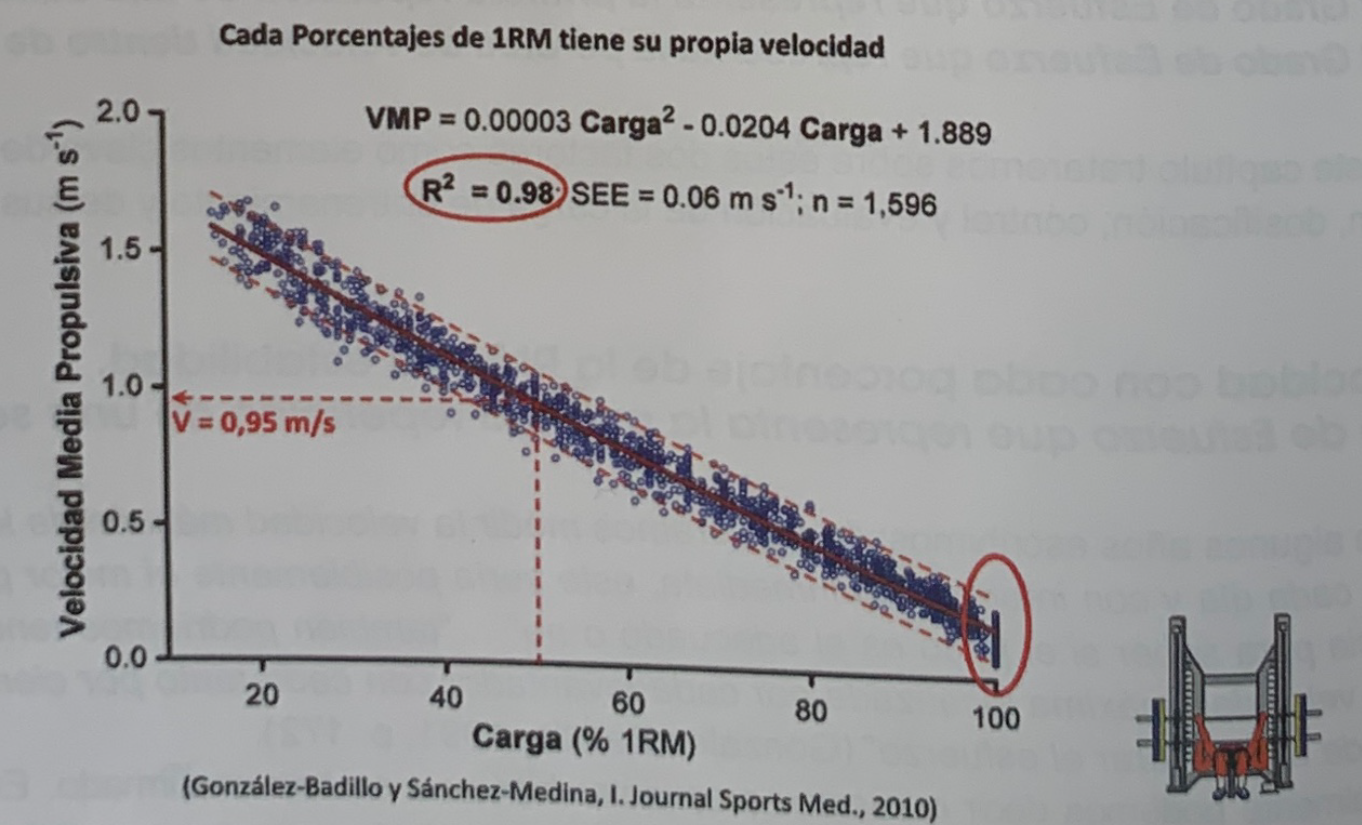Fatigue in different types of efforts
Fatigue in different types of efforts can be characterized and measured in different ways depending on the duration and intensity of the efforts. In this entry we analyze the various factors that cause fatigue according to the duration of the effort.
In this series of articles we deal with some of the most important concepts of strength training, collecting notes from the recently published book Strength, Speed and Physical and Sports Performance written by renowned researchers Juan José González Badillo and Juan Ribas Serna.
SUMMARY
- In short efforts the performance is highly dependent on the oxygen consumption capacity of the subject (VO 2max)
- In efforts of up to 30 minutes, the lactate threshold point (anaerobic) is decisive.
- In efforts that last more than an hour, fatigue is highly associated with the depletion of muscle glycogen stores.
- A good metabolic indicator of stress caused by exertion is the blood lactate concentration.
- The loss of execution speed is a faithful reflection of the fatigue state of the subject.
short duration efforts
From efforts as short as 100 meters of sprint (10-12 s) there are already losses of speed (decrease in performance) involuntarily, which is an indicator that during the test there is a phase in which it manifests itself. fatigue as a loss of capacity to produce force in the unit of time.
The causes of fatigue in this type of effort are multiple, but of all of them the decrease in availability is probably the most important. Considerable increases in the plasmatic concentration of hypoxanthine, ammonia and uric acid have been observed in this type of effort. These results indicate that there have been difficulties in synthesizing ATP via ADP + CP and that energy production has been resorted to through the ADP + ADP = ATP + AMP reaction. This indicates that you there has been significant metabolic stress in the muscle cell, which can be associated with injury to said cell, and the loss of purines that can negatively influence the phosphagen reserves of the muscle, which has repercussions in the reduction of the muscle’s capacity to produce energy quickly in the following days.
Metabolic stress on the muscle cell influences the muscle’s ability to produce energy on successive days.
It does not appear that acidosis is a determining factor in these cases. In addition to what has been indicated, this fatigue is associated with a decrease in the activation of motor units in the excitation-activation process and an increase in Pi and ADP. In other short efforts such as throws, jumps, Olympic lifts and the like, fatigue is related to the same mechanisms, but with less influence from metabolic factors. If the efforts are somewhat longer (15-40 s), the participation of the phosphagen pathway to provide energy is coupled in a very important and decisive way with the ability to rapidly provide energy through the anaerobic glycolytic pathway. For this reason, in this type of effort, all the factors responsible for fatigue in the previous type of effort are present and increased, plus those derived from a drop in pH.
Therefore, it is likely that the concentration of metabolites, the alteration of calcium transport (excessive accumulation of myoplasmic calcium), the accumulation of Pi and the excess of extracellular potassium are also present as responsible for fatigue in this type of effort. The same causes of fatigue occur in efforts that last about a minute, but the fundamental difference is in a greater influence of the pH reduction, which practically reaches its maximum in efforts of this duration. High acidity, in addition to the previously described effects on the cross-bridge cycle, acts on cionide channels (which mainly govern membrane excitability), depolarizing the membrane and leading to the inactivation of sodium channels, essential for the generation of action potentials, at the end of the effort.
In this situation, the hydrogen ions themselves act by priming the working speed of the mitochondria, shifting the burden of maintaining the energy supply to the mitochondrial aerobic pathway. Given the low rate of ATP generation from the mitochondria compared to the anaerobic glycolytic pathway, the rate is clearly reduced at the end of the effort. These same causes could be applied to efforts that last up to three minutes, with a greater dependence on the ability to provide energy aerobically.
long-lasting efforts
When the efforts last between 5 and 10 minutes, performance is highly dependent on the subject’s oxygen consumption capacity (VO 2max), but there is also significant phosphagen depletion and high acidity. Therefore, in this type of effort, fatigue may depend in part on the processes related to phosphagen depletion, and to a large extent on the ability to produce energy aerobically (power and maximum aerobic capacity), but also on the power and anaerobic capacity and problems related to the reduction of pH.
In efforts of up to 30 minutes, the lactate threshold point (anaerobic) is decisive.
In efforts that last up to approximately 30 minutes, the aerobic power of the subject is still very important, but the speed at the lactate threshold point (called anaerobic) seems to be more decisive. Therefore, fatigue may be closely related to the ability to capture, transport, and use oxygen for the oxidation of glucose by the aerobic route, but especially to speed or power in conditions of suprathreshold lactatemia. In the final sprint of some tests, the depletion of muscle CP reserves or excessive muscle acidity may influence. Another factor that may be related to fatigue is high body temperature, although this would be more relevant after one hour of effort.
In efforts that last more than an hour, fatigue is highly associated with the depletion of muscle glycogen stores., and, therefore, although all the factors indicated for the previous efforts are present to some extent, the availability of glycogen stores could be a factor causing the fatigue of this exercise. In addition, glycogen depletion is associated with fatigue as it may cause decreased calcium release from the sarcoplasmic reticulum and consequent effect on muscle activation, although the link to low glycogen is uncertain. with failure of calcium release (Allen et al., 2008).
In efforts that last more than an hour, fatigue is related to the depletion of glycogen stores.
Other factors such as an excess of ammonium, an increase in muscle Mg concentration, an excessive increase in body temperature or an insufficient capacity to use lipids to produce energy could also be the cause of fatigue in this type of effort.
Efforts to overcome external loads
As we have indicated when discussing the concept of fatigue, in addition to a decrease in force production, another aspect of muscle performance such as speed of shortening is also an indicator of fatigue (Allen et al., 2008; Edman, 1992). If we take into account that the loss of speed before the same load is a direct consequence of the reduction of the force applied to said load, we must admit that the loss of speed is a faithful reflection of the state of fatigue of the subject.
It is evident that when a subject is visually perceived to be “tired” (fatigued), we detect it by the loss of execution speed, whatever the activity the subject performs: displacing an external load or displacing his own body. Speed also has an advantage over force as an indicator and quantifier of fatigue, and that is that it can be measured more easily and accurately than force, and also in competition and training gestures or actions.
The loss of speed in efforts to overcome external loads is a faithful reflection of the state of fatigue.
Therefore, when a gesture has to be performed at the maximum speed possible, knowledge of the loss of speed may be the best procedure to determine the degree of fatigue in which the subject is found during and after the effort. These reasonings lead us to propose that when training is carried out through the displacement of external loads, the loss of speed in the series is an accurate indicator of the fatigue (and the load) that carrying out the exercise supposes for the subject.
Given this premise, the validation of the loss of speed in the series as an indicator of fatigue is achieved if there is a high relationship between this loss of speed during and at the end of the effort, and the reduction in contractile capacity, which could be quantified. also through the loss of speed with respect to the speed reached when displacing the same load prior to the fatiguing effort. Specifically, as mechanical indicators we can use two exercises:
1) the loss of speed before the same load, which in our case is the maximum load that can be moved approximately 1 m*s-1, and
2) the loss of jump height (which is really also a loss of speed) after the effort.
To this main validation, the relationship with indicators of the degree of stress caused by the effort could be added, which could contribute to a better knowledge of the type of effort made and the possibility of replacing the measure of certain metabolites by the loss of speed (concurrent validity ). As metabolic indicators we consider the changes in the concentration of lactate and ammonium. Indeed, a good metabolic indicator of stress caused by exertion is the concentration of lactate in the blood.
Lactate production is related to the difference between the motor command of the central nervous system and the actual mechanical execution of the muscle. The greater the difference between what is commanded by the central nervous system and what is executed by the muscle, the greater the lactate production will be. In addition, lactate production, far from being detrimental to the functioning of muscle fibers, is actually an essential component to improve muscle fiber excitability by blocking chloride channels (Ribas, 2010; González-Badillo and Ribas, 2002). As shown later, the relationship between the lactate concentration and the loss of speed of movements executed at maximum speed is excellent, such that the greater the loss of speed, the greater the production of lactate by the muscle fibers (Sánchez -Medina and González-Badillo, 2011; Rodríguez-Rosell et al., 2018).












